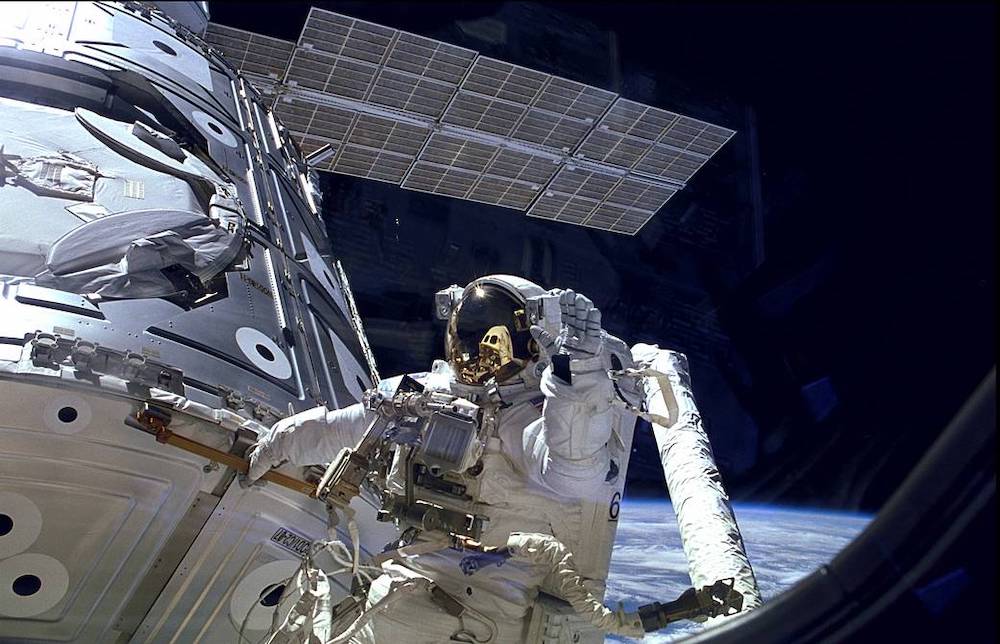Create a free profile to get unlimited access to exclusive videos, sweepstakes, and more!
Fungus could protect astronauts with a superhuman radiation shield
Some organisms from Earth can survive exposure to otherwise deadly radiation — like the fungus among us.

Cosmic rays don’t obliterate everything. Some organisms from Earth can actually survive exposure to otherwise deadly radiation — like the fungus among us.
There are species of fungi that can be almost supernaturally tough when faced with the brutal conditions out there. Though black mold probably isn’t the one you want to think of, it was able to stay alive on the outside of the ISS. Enter Cladosporium sphaerospermum. This non-pathogenic fungus not only survives, but thrives in space radiation that it uses to grow in a process known as radiosynthesis. It could possibly create a self-replicating radiation shield.
Humans who rocket off Earth are also leaving the magnetosphere that keeps killer radiation from blasting the planet (or else it would look like Mars). While there are a few ideas floating around about possibly terraforming Mars by giving it an artificial magnetic field, that won’t be happening any time soon. Researcher Nils Averesch of Stanford University, who is working with the light-eating fungus, coauthored a study recently posted on preprint server BioRxiv.
“The exact mechanism of radiotrophy is not fully understood yet,” Averesch told SYFY WIRE. “It has been proposed that melanin acts as a ‘mediator', where electrons in the molecule serve to reduce NAD to NADH, which results in a net-energy gain of cellular metabolism.”
What we do know about C. sphaerospermum is that this extremophile thought Chernobyl was paradise. It was found growing at the nuclear disaster site as if nothing had happened, because just as plants absorb sunlight for photosynthesis, it captures ionizing radiation for radiosynthesis. Having a shield of living fungus on board a spacecraft headed for the Moon or Mars would end up blocking much of the radiation that would otherwise expose astronauts to serious health hazards. Floating around in microgravity for so long can be bad enough.
There are still some unknowns about what types or amounts of radiation might be able to take down the super-fungus. It was not possible to tell exactly what kind of radiation, whether in wave or particle form (particles are more dangerous) and how much of it was absorbed by C. sphaerospermum when it was on the ISS. The radiation sensors used to find out what exactly was hitting the fungus could only detect gamma radiation within a certain energy range. During the experiment, there was also no way to find out the absorbed amount of ionizing radiation.
“Radiation on the ISS is mostly composed of energetic charged particles — electrons and protons — from the Van Allen Belt,” Averesch said. “The impact of the different types of radiation on the fungus would have to be assessed in dedicated studies.”
Unfortunately, there are hardly any labs in the U.S. that are capable of recreating the galactic cosmic radiation (GCR) in the Milky Way, because that is an immense amount of energy to generate. There is also a problematic ion the fungus might not be resistant to. HZE ions are heavy, high-energy nuclei that shoot through space in galactic cosmic rays. They only make up a small percentage of GCR, but are the most destructive particles, which the fungus may not be strong enough to withstand. It needs to get into a death match with them to know for sure.
Another downside is that such a thick fungal layer is needed for optimal protection that it would not really do much for spacesuits and gear that astronauts would need to move around in. Even habitat walls would need almost 8 feet of it, which is why Averesch thinks we are probably better off pursuing subsurface lava tubes as hideouts from radiation. However, he does think that surface habitats made of Martian regolith could benefit from these radiotrophic fungi as a sort of binding agent that would result in a habitat that regenerates itself and blocks radiation.
“While a habitat of this kind would still have to have an outer layer of synthetic material to pressurize and insulate the biological component from the harsh climate of Mars, this would nevertheless greatly reduce the amount of material to be shipped there,” he said.
No matter what NASA and other space agencies end up doing about the radiation problem, you have to say that the potential of this fungus is humongous.


























